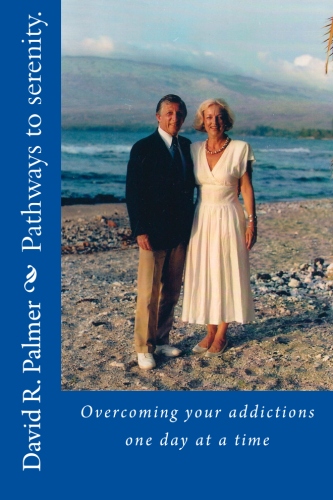“On March 4, 2007, combat veteran Chris Dana, put a .22 against his head, muffled it with a comforter and ended his life as quietly as a book drops. He had PTSD and didn’t get the help he needed.”
These deeply affecting words were written by Eric Newhouse, a Pulitzer Prize winning journalist, in his book, The Faces of Combat: PTSD and TBI. (PTSD stands for Post Traumatic Stress Disorder, and TBI stands for Traumatic Brain Injury).
The symptoms of PTSD fall into three categories: re-experiencing (e.g. relentless nightmares, unbidden waking images, flashbacks); hyper-arousal (e.g. enhanced startle anxiety, sleeplessness); and phobias.
TBI involves physical damage to the brain with much broader implications and more complex treatments and recovery rates and will be the subject of future articles.
Bob G., whose story appears in this issue served with the Marines in Vietnam for 16 months and for many years has been treated for PTSD stemming from his combat service during the late sixties.
During the 32 years after his service, overcome by his fears, anger and addictions, he lost his family, went to prison three times, once for murder, and attempted suicide ten times. At one point, he was given a year to live because of his numerous afflictions. There’s more bad stuff, but you get the picture.
Now here’s the good part. Today, Bob is a happy man with a family and a mission who, because of his service to others, is loved by many who know him. And he loves them back.
So, how did he do it?
A key was his decision nine years ago to confront his addictions by going to Alcoholics Anonymous and shortly after that, Narcotics Anonymous. These 12-step meetings, which are available to all who seek recovery worldwide, gave him a recipe for success and a host of new friends to share it with.
He also began to make better use of the resources of the Veterans Administration, including a “Vet Center” in North Little Rock.
I met Bob at a noon NA meeting at Recovery Central, a facility for 12-Step meetings on 7th Street in Little Rock. Tom Barron, chairman of Recovery Central at the time, had suggested to me that Bob, whom he deeply admires, had a compelling story that might in some way help our readers, especially veterans.
 The two key things that Bob did was to deal with his addiction problems through active participation in a 12-Step program — Narcotics Anonymous —and making better use of Veterans Administration treatment options — in this case Vet Centers.
The two key things that Bob did was to deal with his addiction problems through active participation in a 12-Step program — Narcotics Anonymous —and making better use of Veterans Administration treatment options — in this case Vet Centers.
From personal experience, I can tell you that 12-Step meetings work. They are accessible, and they are free. There is always a place to go, get a cup of coffee and be with people who have similar problems.
Being with people and forming relationships is a key. The biblical principals, upon which Bill Wilson, founder of AA, based his 12 Steps, are, of course, vital, but they were not meant to be copied and handed out for people to read at their leisure at home. They were meant to bring people together in common cause. Addicts tend to be loners and this is especially true of combat veterans.
Former Army Ranger Danny Ray Reed II, who was engaged with special operations, had this to say in Newhouse’s book.
“When you come back, you’re either a workaholic or an alcoholic. If I wasn’t working, I was drinking. It helps for the first couple of hours but then it takes you back into that frame of mind you don’t want to be in. I drank so bad I had a two-day blackout, and that’s dangerous.”
During that blackout, Reed got into a row with the crew of a United Airlines flight to the point where they refused to sell him more drinks, which almost landed him in jail. Instead, he ended up in treatment for both his PTSD and his alcohol addiction, which led to this interesting observation about 12-Step programs.
“Step one is admitting you do have PTSD. Step two was to quit drinking and drugging. They’re different in some ways but PTSD and alcoholism are a lot alike in other ways. You have to admit you have those problems. You can’t be in denial about it. And you have to realize that its something that will not go away and can’t be cured. All you can do is learn to live with it.”
A second resource is the free and welcoming Vet Center. VA hospitals-John L McClelland Memorial Hospital in Little Rock and the Eugene J. Towbin Health Care Center in North Little Rock in Arkansas, for example-provide treatment for PTSD, but they are big and at times impersonal, and some vets don’t want to deal with them.
Recognizing where these combat veterans were coming from, the federal government, in 1979, created a kind of storefront, informal operation in shopping malls and other accessible locations called Vet Centers.
Staffed with a counselor or two and a secretary, the Centers were at first intended to serve the Vietnam veterans but were later expanded to include all veterans and their families who served in a combat zone. That includes World War II, Korea, Lebanon, Grenada, Panama, Persian Gulf, Somalia, former Yugoslavia and the Global War on Terror.
All the services are free and available to all combat veterans except those who have been dishonorably discharged. Regrettably, there are only two Centers in Arkansas, one at the corner of Broadway and Maple in North Little Rock and the other in Fayetteville, but they do offer outreach services.
The readjustment counseling services include: individual, group, marital and family and bereavement counseling; medical referrals; employment counseling, guidance and referral; alcohol/drug assessments; information and referral to community resources; sexual trauma counseling and referral; and community education.
I visited Van Hall, a veteran and a readjustment counselor at the North Little Rock Vet Center. Located in a strip mall, the spacious and welcoming Center has a staff of five and serves hundreds of veterans.
“Unfortunately,” Hall says, “some of our veterans, particularly the Vietnam vets, have had bad experiences with the Veterans Administration in the past, and don’t want anything to do with it. The low key, highly personal vet centers provide an attractive alternative to large hospitals.”
Vets who are mad at government may miss out on treatment or benefits, and Hall encourages them to come in and find out about what’s available to them. Actually, he notes with a smile, wives, learning of special benefits, sometimes push their husbands to find out what they are entitled to and to get the help they need.
Hall notes that his VA Center offers a host of material helpful to veterans including a paperback book titled, “The War W ithin — One More Step at a Time” by cartoonist G.B. Trudeau, creator of Doonesbury.
It concerns the rehabilitation of BD, a regular character in the strip, who struggles with PTSD and a reluctance to deal with it. We have published four pages from the 110-page book to give the reader a taste of his interaction with his family and his counselor, Eli.
There are an estimated 400,000 veterans who suffer from PTSD going back to World War II, and as the fighting continues in the Middle East, the casualties are mounting and so are the cases of PTSD.
PTSD is not unique to the battlefield, many psychiatrists point out. It can be found among rape victims or among those who survived the Oklahoma City bombing or 9/11, for example. But these events aren’t quite the same some doctors contend.
Dr. Dennis Grant, who served in Vietnam, said in a recent Wall Street Journal article, “Daily life in a combat zone is different than a civilian event.”




